 |
 |
 |
| |

|
|
| |
|
|
| |
| Kit advice page
- Ice axes |
|
 |
 |
|
 |
| Welcome to this
kit focus |
 |
|
 |
 |
 |
 |
 |
We are
in the process of developing these equipment advice
pages for many of the key items of equipment, in
order to help people prepare better for their trips.
We are always editing these pages, so if you have
any feedback about information we should add to
the page, please let us know. |
|
 |
 |
 |
This page
has largely been written by Emma
from our Windermere
HQ, and it's here that most people
have their first contact with us, in person or on
the phone. We feel it's important that all our staff
are experts on the mountains and kit we offer, so
we are all involved in developing these advice pages. |
|
|
 |
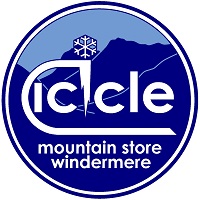
|
 |
Which ice axe?
With the first
snow fall on the tops of the fells in the Lake District,
and the first proper harsh frosts and icy mornings having
arrived, it's time to prepare for the upcoming winter
season. Time to check you have the right kit for the
winter conditions before you head out onto the fells
and mountains. One of the most common misconceptions
about ice axes is that they are used exclusively for
ice climbing and winter or Alpine mountaineering, and
so many people decide they don't need an axe. Ice axes
are also used for snow walking, alpine ski touring,
ice climbing or mountaineering. The key use of an axe
is always to prevent small slips developing into a fall.
We know that it's not always easy to select the correct
ice axe, due to the often bewildering range of pick
shapes and lengths available, especially as every single
one has been designed for differing terrain. To
return to the equipment lists and advice pages overview,
please click here.
|
|
 |
Technical or
Classic axe?
The simplest choice to make when selecting an ice axe,
is if it is for technical (often vertical) climbing routes,
where a pair of 'technical' axes would be selected, or
if it is more benign terrain where a 'classic' ice axe
would be selected, such as for easy snow ascents (e.g.
Mont Blanc), winter hill walking, snowshoeing or alpine
ski touring.

How to choose a length of ice
axe?
When walking with an ice axe, it's normal to hold the
ice by the head, with the shaft pointing towards the floor.
If walking unroped, such as winter walking in Scotland,
the pick generally points backwards, so the axe can be
lifted into an ice axe arrest position immediately. On
more technical ground, or if roped up on harder snow or
ice, it is often safer to hold the head of the axe with
the pick pointing forwards, as the short-roping skills
or running belays are used to stop a slip developing into
a fall. Walking axes come in various lengths, and the
traditional method of choosing the correct length is to
hold the axe by its head down by your side. The tip of
the spike should be somewhere between the top of your
mountaineering boots, and your ankle bone. For easier
routes, this is ideal sizing, but for slightly more technical
routes, a shorter axe is preferable, as the arm does not
need to be elevated as much and the spike is less likely
to catch in event of a fall, causing injury or cartwheeling.
For mountaineering the axe sizes most commonly chosen
are between 50 - 60cm long, and almost all technical axes
are a standard 50cm length.

Pick shape - Classic or Banana
/ Drop curve?
Classic pick
This is the most common type of pick curve on a classic
ice axe. If you imagine holding the axe just above the
spike, and swinging it into the ice, the pick is curved
slightly steeper than the arc of rotation, to ensure a
positive grip and lock into the snow / ice, for a secure
placement. This shape is equally good for ice axe arrest,
but note that an aggressive curve can sometimes bite into
the snow quite harshly, with the effect that it is ripped
out of your hands, so a more neutral curve more in alignment
with the arc of rotation is often sought.
Banana pick / drop curve pick
These picks with a reversed curve feature on all technical
ice axes, and the reasoning for this is twofold; firstly
the inverse arc of the pick is ideal for hooking into
placement positions on ice or mixed terrain, and secondly
when the shaft is pulled away from the ice to extract
the pick the upper curve of the pick smoothly cuts out
of the ice to release it from a weighted position.

What is the 'B' (basic) or 'T'
(technical) rating?
Both the pick and the shaft of the ice axe are separately
tested by the UIAA to independently give them a rating
for the shear forces that they with withstand. Basic ratings
are up to 200kg, which is plenty enough for most people
for their classic ice axe, although on steeper ground
where the axe is used for snow belays or in positions
where greater stresses are placed on it, a technical rating
might be sought. All technical ice climbing tools are
also technical rated. This equates to a loading of up
to 400kg on the shaft or the pick. The reasoning behind
separate testing of the shaft and pick, is that the axe
could have a 'B' rated shaft and a 'T' rated pick, to
make it lightweight, yet have a stronger pick that is
good on mixed ground.

Choice of axe materials
Steel
An alloy of steel is by far the most common used manufacturing
ice axes. Depending on the alloy, and where used, it is
the most durable metal, however it's also the heaviest
too. For routes where ice needs to be cut, steps hacked,
or debris cleared, a steel axe is the most durable by
far. Its weight makes penetration into snow or ice easier,
but on long routes the weight can also be tiring on the
arms. Any route where hard ice or torquing on mixed ground
are encountered, steel axes are the best choice by far.
Titanium
The next choice
is titanium, as it is nearly as durable as steel, though
it is still heavier than aluminium. Whilst on a tensile
test, titanium is stronger then steel, it is easier to
bend, so it's not ideal for anything other than snow routes,
and in extreme cold or duress it won't crack or shatter
like aluminium. Titanium is far more expensive than steel,
but for classic routes is an increasingly popular choice.
Aluminium
This material is the lightest of all the choices above,
but is not very durable. Its usually ideal for the preserve
of super lightweight ascents, ski touring, adventure racing,
or snowshoeing, on which steep snow or ice is avoided.
These axes are ideal for basic routes or as an emergency
back up on routes where the use of an axe is not always
essential or planned.
Adze
The back of the axe behind the pick is called the adze.
When selecting an axe, look to see if this is all one
piece (i.e. drop forged) or welded on. The former is stronger,
heavier and more expensive, but will last a lifetime,
whereas the welded option is lighter, cheaper and less
durable. If cutting steps in ice or hard snow, go for
the durable option.

Leash or leashless ice climbing?
For classic axes, they often are sold without any leash
at all, or with a detachable leash. The advantage of this
is that on a route where you are changing direction often,
the leash would have to be swopped to the uphill hand
on every turn, and there is a risk that you could get
lazy and either not swop hands on the axe, or drop the
leash so it became a crampon trip hazard. Whilst these
improper uses are negative, the leash may be useful on
a classic axe on a long traverse, to reduce the dropping
hazard. On stepper snow with a classic axe, or when using
technical axes, leashes offer wrist support, to take some
strain off your arms and hands. An option some climbers
consider is to climb without a leash, to allow a more
dynamic climbing style, and to swop hands on the axe(s)
to suit placements. There is a greater risk of dropping
the tool, but you can secure the tool with a long lanyard
or elastic, to stop the tool falling too far if dropped,
whilst retaining the advantages of leashless. There's
no right and wrong with selecting whether to use leashes
or not, so select what style you feel provides you more
security, and minimises risks.

Selecting an Adze or a Hammer
The back of the pick either has an adze (triangular blade)
or a hammer attachment. The adze is useful for clearing
ice, cutting steps, or digging out a t-belay or bollard.
The hammer is useful for torquing in cracks, hammering
in any protection, or placing pitons. On technical climbs
either two technical ice axes with hammers are carried,
or one axe and one hammer. On snow climbs, an adze is
always preferable.

What type of spike is required?
When winter walking, glacier hiking or Alpine mountaineering,
a spike is useful as a third contact point, as this is
most often the first or only point of contact with the
snow. When on soft snow or powder snow, an axe with a
cut-off style shaft is fine, as it saves weight, and it
will penetrate the snow easily anyway.

Getting advice
Our Icicle shop in Windermere stocks and sells 4 different
types of ice axes manufactured by Black Diamond; and CAMP.
Here is a quick guide as to which we sell, and some key
points to help you decide which are best for what you
need. If you need any assistance in deciding which ice
axe is best for you, visit our shop and Office in Windermere
in the Lake District for kit and course advice; or see
our online shop (click here)
or email our team with any queries if you are looking
to purchase a axe, or wish to know if an existing axe
you have is suitable.

Below is a table showing the ice
axes that we stock in the Icicle Windermere shop.
 |
 |
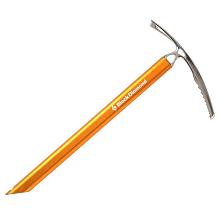

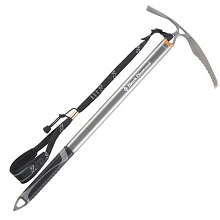

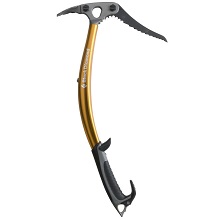

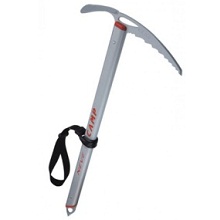

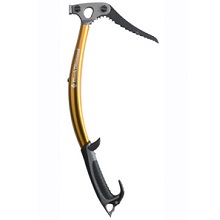 |
|
|
Ice Axe Name
|
Image
|
Weight (grams)
|
Length (cm)
|
Description
|
Route uses and axe details
|
CAMP
Neve ice axe
|
 |
425 grams |
50, 57, 65
|
A removable light slider wrist
loop leash is included with this axe. |
A classic "B" rated ice axe suitable
for UK hill walking, Alpine ski touring, and snow routes. |
Black Diamond
Raven Ultra
|
 |
352 grams |
55
|
A lightweight features a polished
stainless steel head and spike. The head is designed with
an aggressive pick and a large hole for a karabiner. This
is the lightest ice axe we stock, and it handles well
for its weight.
|
A classic "B" rated ice axe suitable
for alpine ski touring. |
Black Diamond
Raven Grip
|
 |
505 grams |
55 |
Classic ice axe with a lower grip
and a Slider Leash for increased security and versatility.
The aluminium shaft and investment-cast stainless steel
head provide durable, functionality whether you're plunging
up a snowy couloir or traversing a ridge. The comfortable
dual-density grip increases holding power when using the
axe as an ice tool. |
A removable leash is included with
this axe. A classic "B" rated ice axe for walking and
mountaineering. |
Black Diamond
Viper adze
|
 |
651 grams |
50 |
The Viper is built with a hydroformed
shaft to increase stiffness and reduce weight, while maintaining
exceptional clearance and balance. Laser pick, Viper Strike,
and Fang are included, modular head design. Removable
upper & lower pommels. Shaft CEN-T, pick CEN-B. Leashes
are not included but can be bought separately. |
A technical "T" rated all-terrain
tool, ideal for ice and technical alpine climbing. |
Black Diamond
Viper hammer
|
 |
631 grams |
50 |
The Viper is built with a hydroformed
shaft to increase stiffness and reduce weight, while maintaining
exceptional clearance and balance. Laser pick, Viper Strike
and Fang are included, modular head design. Removable
upper & lower pommels. Shaft CEN-T, pick CEN-B. Leashes
are not included but can be bought separately. |
A technical "T" rated all-terrain
tool, ideal for ice and technical alpine climbing. |
|
 |
NOTES
Laser pick - Designed for pure ice, the Black
Diamond Laser Pick has a thin nose and low-volume tip to help
it drive into the ice without shattering and displacing ice
for a secure first swing placement.
Viper Strike - The Viper Strike is easily attached to either
a Viper Ice Tool for matching hands or changing grip when leashless
climbing.
Viper Fang - The Viper Fang is a grip rest for the Viper Ice
Tools. Its ergonomic shape provides a big, comfortable grip
when leashless climbing and dry tooling, and protects your knuckles
from getting bashed. |
 |

 |
| Photo of
the day - updated every time the page loads |

|
 |
|
 |




 |
 |
Key ropework
If you are on a climbing or skiing course, you may
wish to refresh or learn some of the key knots and
ropework before your trip. Click on a knot on the
left to visit the page that explains the 9 most
popular knots that you might use, as well as the
1:3 and 1:5 rescue hoists. |
|
|
|
|
 |


 |
 |
| |
|
|
 |
|
|
|
 |
 |
Icicle logo
is the registered trademark ® of Icicle Mountaineering | | UK company 413 6635. VAT 770
137 933 UK company 413 6635. VAT 770
137 933
|
|
|
|
|
 |
 |
 |
|
